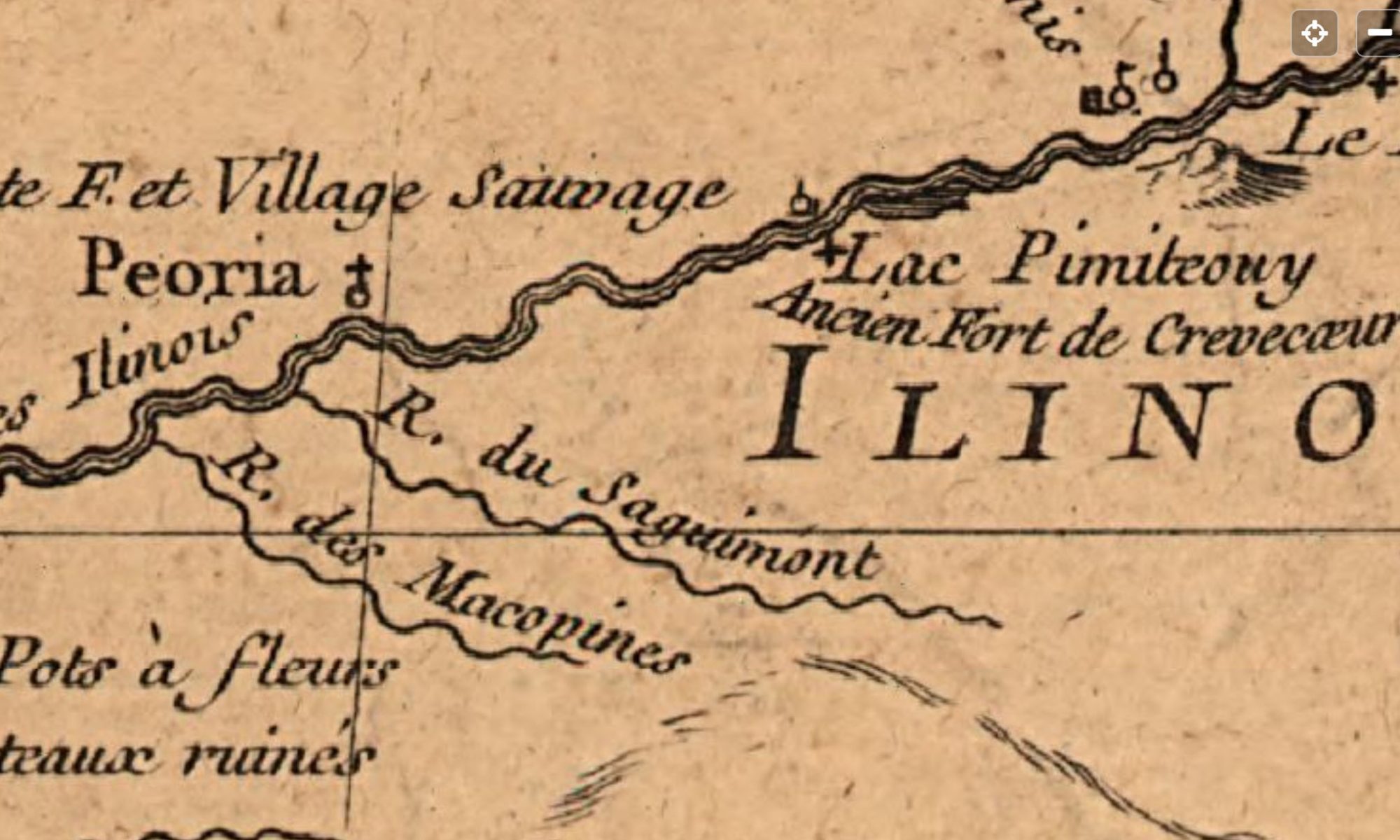In 1721, a small group of Frenchmen paddled canoes from the confluence of the Theakiki (Kankakee) and the “River of the Illinois (tribe)” to the Mississippi River. They were on their way to French settlements in Louisiana. Among the group was Pierre-Francois Xavier de Charlevoix, a Jesuit priest. Charlevoix documented the voyage in a series of letters that include descriptions of the landscape and Native American residents of the river valley.
According to Charlevoix, on the morning of October 7, 1721, the group “passed by the Saguimont, a large river which comes from the south.” It is not clear why Charlevoix used that name. Based in part on Charlevoix’s notes, Jacques-Nicolas Bellin in 1755 published a map of the “Nouvelle France or Canada” that included the R. du Saguimont. Over time, the name of this river as recorded on subsequent maps of the region included Sangamond (1778), Sagamon (1804), Sangamo (1824), and finally Sangamon (1833).
In his autobiography, former Governor John Reynolds in 1855 claimed that Sangamon was derived from a Potawatomi phrase meaning “where there is plenty to eat.” To the best of our knowledge, the Potawatomi were not resident in the Illinois River valley until the late 18th century, decades Charlevoix’s expedition.
Virgil Vogel, author of Indian Place Names in Illinois, asserts that the word Sangamon was a cognate, a word with a common origin, of the Ojibway word Sâginawa, meaning a “place of the outlet” or “river mouth.” It is peculiar, at the least, that a word attributed to a group resident on the upper Great Lakes, and not known to have inhabited the Illinois Country, would be applied to a tributary of the “river of the Illinois.”
By 1721, many Frenchman had passed the mouth of the Sangamon River including Pere Jacques Marquette and Louis Jolliet, Rene Robert Cavalier de La Salle, and Henri Joutel, among others. Perhaps the name of the river was related to one of them by Native Americans and as is often the case the pronunciation was lost in translation and the subsequent spelling had little relationship to the original word. Or perhaps Charlevoix or a member of his party had contact with the Ojibway and was familiar with the term and applied it to the mouth of the river that Henry Rowe Schoolcraft described in 1821 as “entering the Illinois by several channels.”
With the foregoing in mind, only one thing is certain. Today, three centuries after Charlevoix penned Saguimont into one of his letters, there is no consensus on the meaning of Sangamon, and It is likely that it will remain obscure for centuries to come.
Post author: Dr. Michael Wiant is Director Emeritus of the Illinois State Museum—Dickson Mounds. He has been a student of Native American history for more than 50 years.

